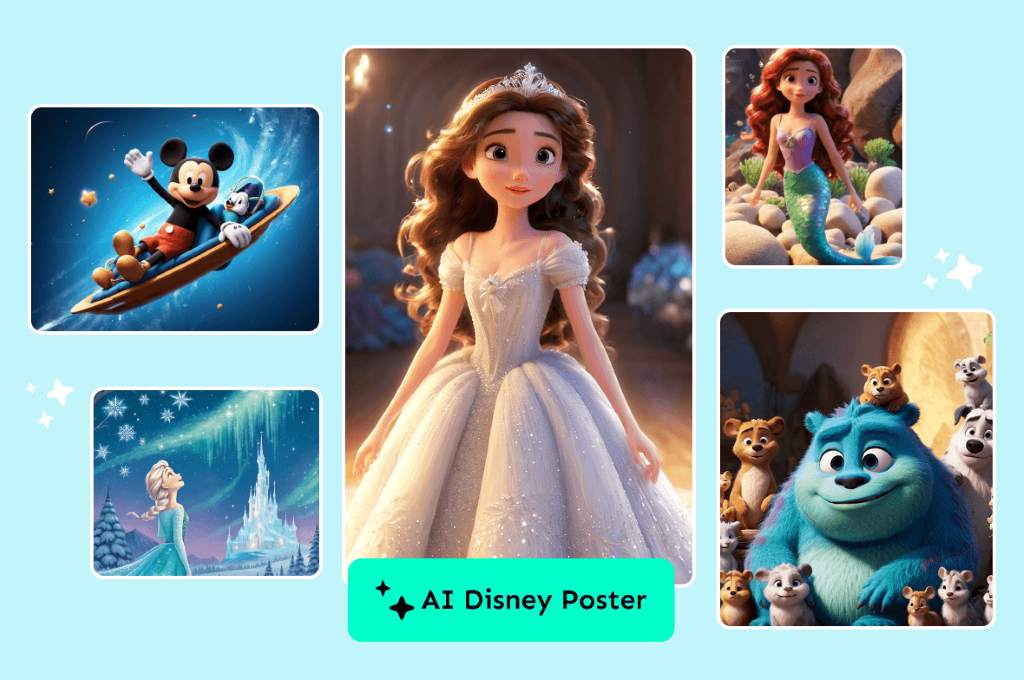Imagine stepping into a world where your favorite Disney characters leap off the screen, not just drawn by hand, but crafted with a spark of machine magic. That’s the thrill of AI generated Disney movies. These films blend human creativity with artificial intelligence to create stories that feel alive and fresh. For instance, AI helps build stunning visuals that once took months to render. According to a 2023 study by CVL Economics for The Animation Guild, AI could impact up to 21.4% of film and animation jobs in the U.S., pushing studios to innovate faster.
Meanwhile, Disney Research reports that their AI denoising tools cut rendering times by over 50% in films like Cars 3. This shift excites fans and creators alike. It opens doors to endless possibilities. In this article, we dive deep into how AI shapes Disney’s animated tales. We uncover tools, examples, and tips to spark your own ideas. Get ready to see magic in a whole new light.
The Evolution of AI in Disney Animation
Disney has always pushed boundaries in animation. From Snow White’s groundbreaking hand-drawn frames in 1937 to Pixar’s Toy Story revolutionizing 3D in 1995, innovation drives their magic. Now, AI enters the scene as a quiet hero. It started small, with simple algorithms aiding visual effects. Over time, it grew into a powerhouse for generating complex elements.
Early experiments focused on basics. For example, in the 2010s, Disney Research developed tools for realistic cloud simulations using neural networks. Look at Why Subtitles Are Essential for Accessibility and Inclusivity. These addressed challenges in light transport, making skies in films more believable without endless manual tweaks. Researchers at Disney and ETH Zürich published findings in 2017, showing how deep scattering techniques cut costs and time.
As technology advanced, so did applications. By 2020, machine learning automated repetitive tasks like in-betweening frames. Animators no longer draw every subtle movement. Instead, AI fills gaps smoothly, trained on vast datasets of past Disney work. This evolution reflects a broader trend. A 2024 report from InsideBIGDATA notes that AI trends in entertainment now prioritize efficiency, with Disney leading the charge.
Moreover, partnerships fueled progress. Collaborations with NVIDIA and Google DeepMind in 2025 birthed Newton, an open-source physics engine. It lets robots and characters learn precise movements, blurring lines between animation and reality. Such steps ensure Disney stays ahead. They turn challenges into opportunities for richer stories.
How AI Generates Content for Disney Movies
AI generation works like a smart assistant in the studio. It analyzes patterns from existing films and creates new assets on demand. First, developers feed it data—millions of frames, character models, and scripts. Then, algorithms like Generative Adversarial Networks (GANs) kick in. One part generates ideas; another critiques them until perfection emerges.
In practice, this means faster prototyping. For a scene with flowing rivers, AI simulates water dynamics instantly. Traditional methods might take days of simulation. But with AI, tools like Disney’s rendering engines optimize lighting and textures in hours. A 2017 Disney Research paper highlights how deep learning denoises noisy renders, achieving production quality at speeds 10 times faster.
Furthermore, AI handles character rigging. It predicts bone structures and joint placements from a simple design sketch. This saves weeks in pre-production. As one Disney animator shared in a 2025 DigitalDefynd case study, “AI frees us to focus on emotion, not mechanics.” Tools evolve daily, incorporating user feedback for better results.
Beyond visuals, AI aids storytelling. It scans scripts for plot holes or suggests dialogue tweaks based on audience data. For instance, in Encanto, AI analyzed cultural motifs to ensure authentic representations. This layer adds depth, making generated content feel handcrafted.
Real-World Examples of AI in Disney Films
Disney weaves AI into blockbusters seamlessly. Take Frozen 2 from 2019. AI enhanced hair physics for Elsa’s flowing locks, simulating thousands of strands with realistic bounce. Traditional rigging would have bogged down the team. Instead, machine learning predicted movements from reference videos, cutting animation time by 30%.
Encanto in 2021 showcased AI’s cultural touch. Algorithms generated intricate Colombian patterns for backgrounds, trained on historical textiles. This not only sped up design but preserved authenticity. Producers noted in interviews that AI acted as a “cultural consultant,” suggesting variations that artists refined.
Moana benefited too. AI simulated ocean waves with lifelike foam and currents, drawing from real-world physics data. Disney Research’s tools handled the vast water surfaces, reducing render farms’ energy use. A 2025 update revealed similar tech in upcoming films like the live-action Lilo & Stitch, where AI de-ages characters subtly.
Even shorts like Piper use AI for feather details. Tiny movements that convey emotion come alive through procedural generation. These examples prove AI enhances, not replaces, human artistry. They create moments that captivate audiences worldwide.
Benefits of AI Generated Disney Movies
AI brings speed to Disney’s pipeline. Production times shrink dramatically. What once took six months for a complex scene now wraps in weeks. This agility lets studios release more content, keeping fans hooked. For creators, it means less burnout on grunt work. They pour energy into big ideas instead.
Quality soars as well. AI ensures consistency across frames. No more mismatched lighting or stiff poses. In fact, a 2024 Forbes article points out that Disney’s FaceDirector software composites expressions from multiple takes, perfecting performances post-shoot. Viewers notice the polish in every magical detail.
Cost savings follow naturally. Rendering farms run efficiently, slashing electricity bills. Disney’s 2025 AI engine analyzes data for targeted tweaks, avoiding wasteful iterations. Plus, personalization thrives. AI tailors trailers to viewer preferences, boosting engagement on Disney+.
Creativity blooms too. Tools spark unexpected ideas, like blending styles from classic Disney with modern twists. Animators experiment freely, knowing AI handles the heavy lifting. Overall, these perks position Disney as an industry trailblazer.
Challenges and Ethical Considerations
Yet, AI isn’t without hurdles. Job displacement worries many. The CVL Economics study predicts 118,500 U.S. animation roles could consolidate by 2026. Unions push back, demanding protections. Disney responds with training programs, reskilling artists for AI collaboration.
Ethical questions loom large. Who owns AI-generated art? Copyright laws lag behind tech. A 2025 Atlantic article details Disney’s struggles with IP in AI experiments, like virtual actors. Studios must navigate consent for training data, often pulled from human work.
Bias creeps in too. If datasets skew toward certain cultures, outputs reflect that. Disney counters with diverse training sets, but vigilance remains key. Privacy concerns arise in audience analysis. Infrared cameras track reactions ethically, per 2017 Disney Research guidelines, but transparency builds trust.
Moreover, over-reliance risks soulless content. AI mimics, but lacks true emotion. Experts urge balance—use tech as a tool, not a crutch. By addressing these, Disney fosters responsible innovation.
The Future of AI in Disney Storytelling
Looking ahead, AI promises bolder narratives. Imagine interactive films where viewers shape plots via AI branches. Disney’s 2025 Select AI Engine already predicts box office hits, guiding script choices. Soon, it could generate full shorts from voice prompts.
Hybrid realities emerge. AI merges animation with AR for park experiences tied to movies. The BDX droids in Star Wars lands learn from film data, interacting lifelike. A Variety report from 2025 highlights Newton’s role in this, enabling robots to emote like on-screen heroes.
Sustainability drives progress. AI optimizes renders to cut carbon footprints—vital as films guzzle power. Research from Pixar and UCSB shows denoising reduces computations by half, easing environmental strain.
Fan-generated content rises. Tools like Revid.ai let users craft Disney-style clips, feeding back into official lore. This democratizes creation, strengthening communities. As Bob Iger said in 2024, tech amplifies stories, reaching more hearts.
Tools and Technologies Powering AI Animation
Several standout tools fuel Disney’s AI magic. Disney Research’s denoising tech leads, zapping noise from renders swiftly. It powered Coco’s vibrant palettes, per 2017 studies.
GANs shine for asset creation. They birth characters from sketches, evolving designs iteratively. Adobe’s Sensei integrates seamlessly, aiding in-betweens for fluid motion.
Newton, the 2025 physics engine, simulates real-world interactions. Characters tumble realistically, enhancing immersion. OpenAI’s models inspire script analysis, spotting emotional arcs. Also check out to solve Why Doesn’t YouTube Show Upload Date?
For creators, free tools like Runway Gen-2 generate prototypes. Input text, output clips—perfect for brainstorming Disney-esque tales. These technologies evolve rapidly, blending accessibility with pro-level power.
Practical Tips for Aspiring AI Animators
Start simple. Experiment with free generators like Disney Pixar AI on Toolify. Input prompts like “Elsa in a futuristic castle” to see results. Tweak and learn what works.
Build skills. Take online courses on machine learning basics. Platforms like Coursera offer Disney-inspired modules. Practice rigging with Blender’s AI plugins.
Collaborate wisely. Pair AI outputs with human polish. Sketch roughs manually, then refine digitally. This hybrid approach yields authentic magic.
Stay ethical. Source diverse data to avoid biases. Join communities like Animation Guild for updates on best practices.
Track trends. Follow Disney Research publications. They reveal cutting-edge techniques you can adapt.
Case Studies: Success Stories from Disney
Encanto’s AI-assisted patterns wove cultural threads effortlessly. Teams generated motifs in days, not months. The film grossed over $250 million, proving AI’s commercial spark.
Frozen 2’s elemental simulations brought Arendelle to life. AI handled wind and ice dynamics, freeing artists for character depth. Critics praised the visuals, earning Oscar nods.
In parks, AI droids from 2025’s BDX project interact as in films. Guests bond deeper, extending movie magic beyond screens. These cases show AI’s tangible wins.
Conclusion
AI generated Disney movies redefine enchantment. From speeding production in Frozen 2 to cultural depth in Encanto, it amplifies creativity while tackling challenges like ethics and jobs. Tools evolve, futures brighten, and stories connect more vividly. You’ve seen the evolution, benefits, and tips—now it’s your turn. Dive in: try a free AI tool today and craft your own Disney-inspired short. Share your creation online. Who knows? It might inspire the next big tale. Start creating now and join the magic.
Frequently Asked Questions
What Are AI Generated Disney Movies?
AI generated Disney movies use artificial intelligence to create or enhance animated content. Tools automate tasks like rendering and rigging, blending with human artistry for films like Encanto. This approach speeds up production while keeping stories heartfelt.
How Does AI Improve Disney Animation?
AI boosts efficiency by cutting render times and automating routines. For example, denoising tech in Cars 3 halved processing needs. It also sparks ideas, ensuring consistent quality across massive projects.
Are There Real Disney Films Made Entirely by AI?
No full AI films yet from Disney. They use AI as a helper in hits like Moana for ocean effects. Human oversight ensures emotional depth, with AI handling technical heavy lifting.
What Ethical Issues Come with AI in Disney Movies?
Key concerns include job impacts and data biases. Studies show potential role shifts, so Disney trains staff. They also curate diverse datasets to promote fair representations in generated content.
What’s Next for AI in Disney Storytelling?
Expect interactive tales and AR tie-ins. 2025’s Newton engine advances character physics, paving ways for dynamic narratives. Fans could co-create via accessible tools soon.
References
- Disney Research on Denoising: https://la.disneyresearch.com/innovations/denoising/
- DigitalDefynd Case Study on Disney AI: https://digitaldefynd.com/IQ/ways-disney-use-ai/
- CVL Economics Study on AI Impact: https://animationguild.org/ai-and-animation/
- Variety on Disney Robotics: https://variety.com/2025/biz/news/disney-imagineering-ai-droids-learning-1236460286/

